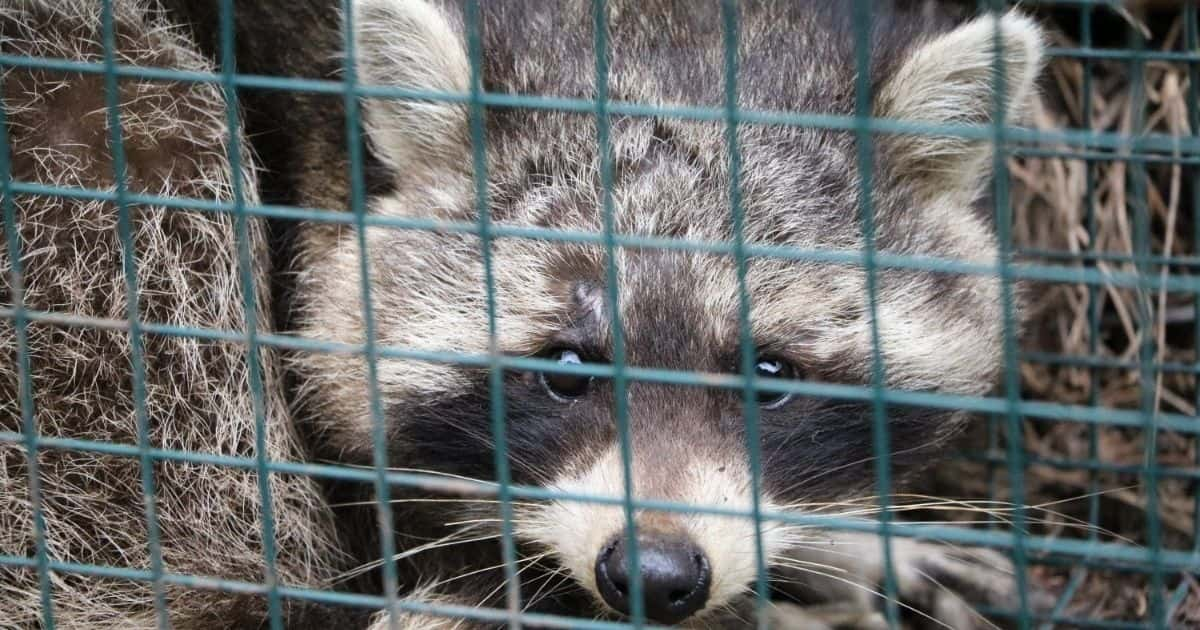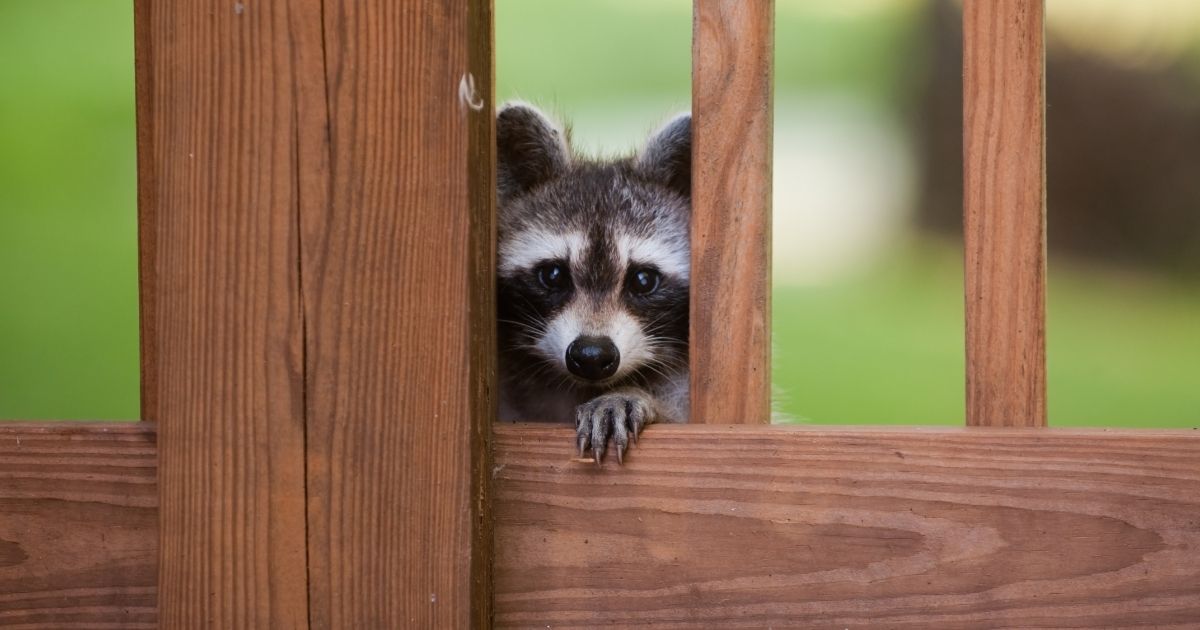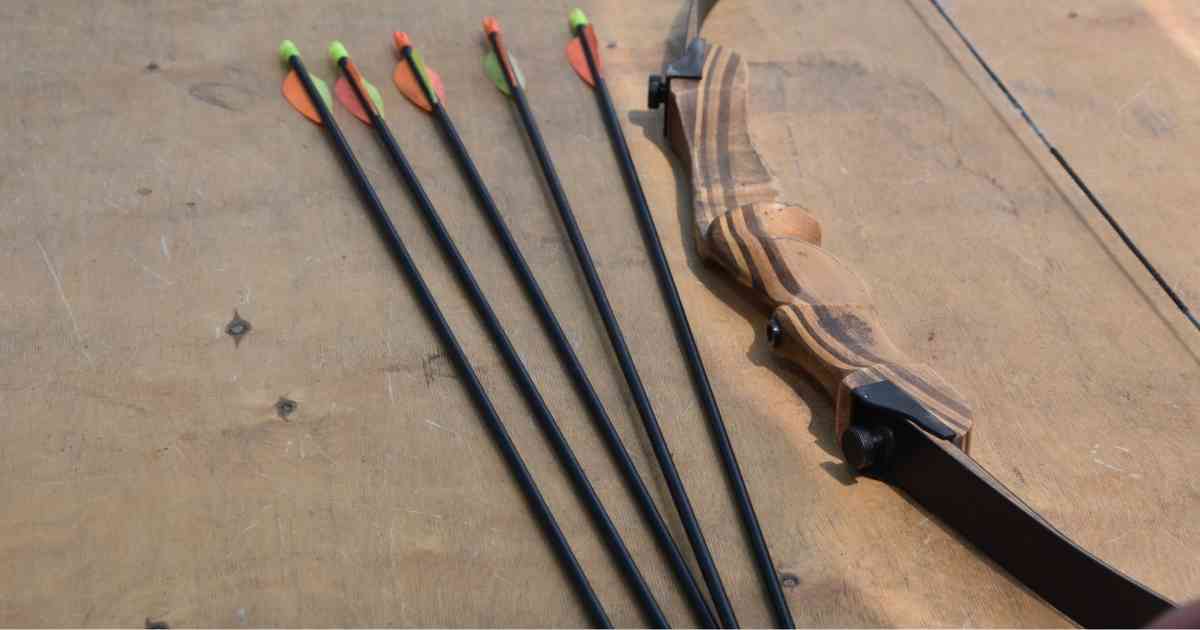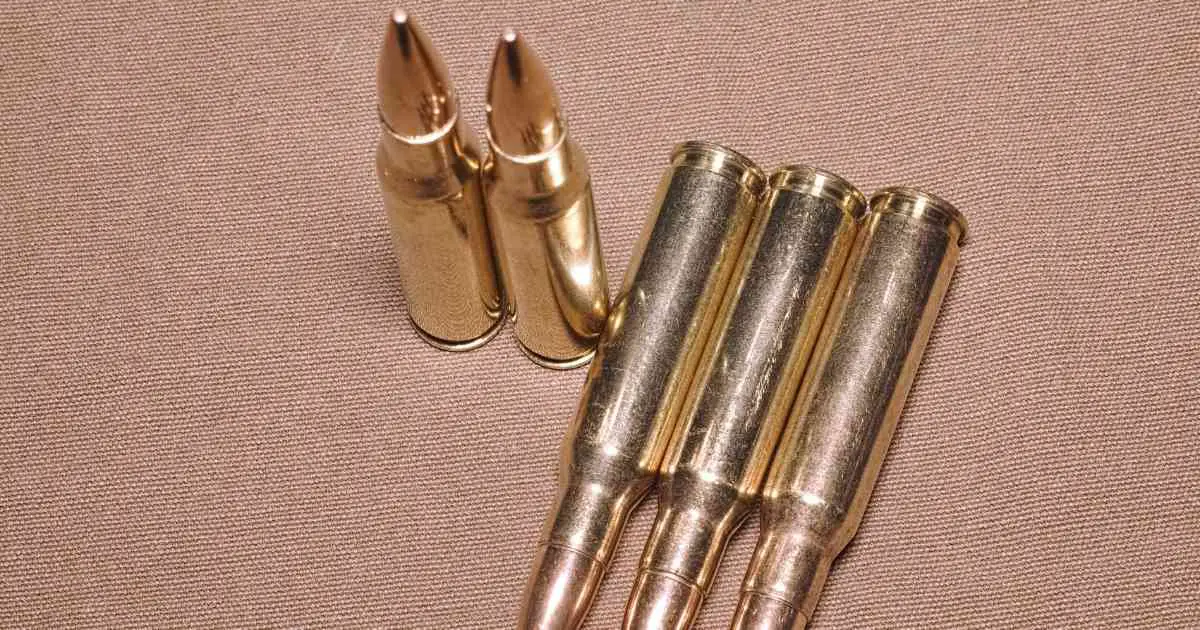Did you know that raccoons are some of the smartest animals in the world? They can solve puzzles, open locks, and even figure out how to get into your trash can. If you have a raccoon problem, then you need to learn how to trap a smart raccoon. These pesky critters can be difficult to catch, but with the right tools and techniques, you can get the job done.
In this blog post, we will cover everything you need to know about trapping smart raccoons. We’ll discuss the best traps to use, as well as how to bait them properly. So if you’re looking for ways to get rid of your raccoon problem once and for all, read on!
What is a Raccoon?
Raccoons are small to medium-sized mammals native to North and South America. The most common raccoon is the North American raccoon, which can be found from southern Canada to northern Venezuela and Colombia. Raccoons are nocturnal creatures, which means they are active at night and sleep during the day.
Raccoons are intelligent and curious creatures, often getting into trouble in urban areas. They are excellent climbers and can squeeze through very small spaces. Raccoons have a distinctive black “mask” around their eyes, which is why they are sometimes called “masked bandits.”
Raccoons are omnivores, meaning they eat both plants and animals. Their diet includes fruits, nuts, insects, small mammals, and birds. These wild animals are known for their love of garbage – they will often rummage through trash bins in search of food item options.
Raccoons can carry a number of diseases that are harmful to humans, including rabies and leptospirosis. If you see a raccoon, it is best to admire it from a distance. If it is in your house or home environment, you need to find a way to get rid of it as soon as possible.
How to Trap a Smart Raccoon

Trapping a raccoon may not be the easiest of tasks, let alone a smart raccoon. But, with the right steps and preparation, it can be done. All you need to do is choose the perfect trap, pick your bait, set the trap, and give it some time.
Here’s a look at each of these steps:
Choose the Perfect Trap
The first step is to choose the perfect trap. There are many different types of raccoon traps on the market, but not all of them are effective against smart raccoons.
The most common type of trap is the live trap, which is designed to capture the animal alive. These traps are usually baited with sweet foods, and when the raccoon steps on the trigger plate, the door closes and the animal is trapped.
Alternatively, there is the kill trap, which is designed to kill the animal. These traps are baited with a source of food or set in areas where raccoons are known to travel. When the animal steps on the trigger plate, the trap springs shut and kills the animal.
Which type of trap you use is up to you, but keep in mind that kill traps are considered more humane than live traps, as they kill the animal instantly. If you do decide to use a live trap, be sure to check it regularly so that the animal does not suffer needlessly.
There are a few things you need to consider when choosing a trap, such as the size of the raccoon and the type of bait. If you’re not sure what kind of trap to get, your local hardware store will be able to help you out.
Choose Your Bait
Bait refers to the food or other lure that you use to entice the animal into the trap. The type of bait you use will depend on the type of trap you’re using, as well as your personal preferences.
For live traps, common raccoon baits include fruits, vegetables, and meats. Raccoons are especially fond of foods like apples, bananas, and chicken. If you’re using a kill trap, common baits include a glob of peanut butter, bacon, and marshmallows.
When choosing bait, make sure that the food is fresh and appealing to the raccoon. You don’t want to use something that’s been sitting in your fridge for weeks, as these will only serve as raccoon repellents.
It’s also important to make sure that the bait is securely attached to the trap so that the raccoon can’t simply take the food and run. A good way to do this is to tie the bait to the trigger plate with string or wire.
Place the Trap in the Right Location
Once you have your trap, the next step is to place it in the right location. Raccoons are clever creatures, and they will quickly figure out how to escape from a trap that is not placed correctly.
The best way to find a good location for your trap is to look for signs of raccoon activity. Look for areas where there is a lot of trash or where urban raccoons are known to travel.
Make sure that the ground is level and there are no obstacles nearby that could prevent the trap from working properly. Once you’ve found the perfect spot, set the trap and secure it to the ground with stakes or rocks.
If you have a pet or young children, be sure to place the trap in an area where they cannot reach it. If possible, observe the raccoon’s activities to determine the best location for the trap.
Be Patient
The final step is to be patient. It may take some time for the family of raccoons to fall for your trap. If you’re using a live trap, check it regularly to make sure that the animal has not escaped or been hurt.
If you’re using a kill trap, check it daily to see if you’ve caught anything. Once you’ve caught a raccoon, be sure to dispose of it properly. The best way to do this is to contact your local animal control or wildlife rehabilitation center.
If you’re having trouble catching a raccoon, there are a few things you can do to increase your chances of success. First, try using a different type of bait. Raccoons are attracted to different foods, so if you’re not having luck with one type of bait, try another.
You can also try setting the trap in a different location. Raccoons are creatures of habit, so if you’re not having luck in one area, try moving the trap to another spot where they’re known to travel. With a little patience and perseverance, you should be able to remove any raccoons from the area.
How to Keep Raccoons Away From Your Property

To avoid raccoon populations invading your property, it is important to take steps to keep them away. Here are a few tips on how to keep raccoons away from your property:
- Remove all food sources: Raccoons are attracted to food, so it is vital to remove or secure any potential food sources. This includes garbage, pet food, and birdseed.
- Seal up entrances: Take a look around your property and seal up any potential entrances that raccoons could use to get in. This includes gaps in fences, holes in trees, and openings under decks.
- Install a scarecrow: A scarecrow can be an effective way to keep raccoons away. Place the scarecrow in an area where you have seen raccoons and make sure it is visible from all sides.
- Use a motion-activated sprinkler: Motion-activated sprinklers are a great way to keep raccoons away from your property. The sudden burst of water will startle the raccoons and keep them away.
FAQs
How do I know if I have a raccoon problem?
There are a few telltale signs that you may have a raccoon problem. For example, you may find piles of trash strewn about your property or see raccoon damage to your home’s exterior, such as ripped shingles or broken windows. You may also hear raccoons rummaging through your trash cans at night or see them raiding your bird feeders.
What should I do if I see a raccoon?
If you see a raccoon on your property, the best thing to do is to leave it alone. Although they may look cute, raccoons can be dangerous creatures and should not be approached.
If the raccoon is causing damage to your property or seems to be acting aggressively, you should find ways to trap it or call a professional wildlife control company or pest management company for assistance.
How can I prevent raccoons from coming onto my property?
There are a few things you can do to deter raccoons from coming onto your property. First, make sure that all of your trash cans are securely lidded and keep them away from the sides of your house.
You can also trim back any trees or bushes that are near your home, as raccoons like to use these as access points. Finally, you can install a motion-activated light or sprinkler system to deter raccoons from approaching your property.
How do you get rid of raccoons fast?
If you’re looking to get rid of raccoons quickly, the best thing to do is to call a professional wildlife control company. These companies will have the experience and equipment necessary for safe raccoon removal. You can also try trapping the raccoon yourself, but this can be dangerous and is not always effective.
What do raccoons hate the most?
There are a few things that raccoons hate, such as loud noises and bright lights. You can use these to your advantage by setting up a motion-activated light or sprinkler system near areas where raccoons are likely to approach your property.
Raccoons dislike the smell of ammonia, so you can try spraying it around your property. Also, raccoons are afraid of dogs, so having a dog may help to deter them from coming onto your property.
Why do raccoons keep coming back?
There are a few reasons why raccoons might keep coming back to your property. First, they may be attracted to the food you have available, such as unsecured trash cans or bird feeders.
Additionally, if there are plenty of trees or bushes near your home, raccoons may use these as access points to get onto your property. Raccoons may also be attracted to the water sources on your property, such as ponds or swimming pools. If you’ve dealt with a raccoon problem, you’ll want to take steps to deter them from coming back.
What home remedy kills raccoons?
There are a few home remedies that you can try to kill raccoons. One popular method is to mix equal parts of ammonia and water, and then spray this around your property. Raccoons dislike the smell of ammonia, so this may prevent them from coming onto your property.
Another option is to mix equal parts of vinegar and water, and then spray this around the perimeter of your property. Vinegar is also unpleasant to raccoons.
Are baby raccoons dangerous?
Baby raccoons are just as dangerous as adult raccoons and should not be approached. If you see a baby raccoon on your property, the best thing to do is to leave it alone and call a professional wildlife control company for assistance. Baby raccoons can carry diseases and may also be aggressive, so it’s best to err on the side of caution.
How do I know if my raccoon trap is working?
If you’re using a raccoon trap to try and catch a raccoon, there are a few things you can do to tell if it’s working. For starters, check the bait regularly to see if it’s been eaten.
You should also check the trap itself for any signs of damage or tampering. If the trap seems to be in good condition and the bait has been eaten, then it’s likely that you’ve caught a raccoon.
Conclusion
If you were wondering how to trap a smart raccoon, we hope that this article has given you the information you need to get started. Trapping a raccoon can be a daunting task, but with the right tools and a little know-how, it can be done.
Remember to choose the right trap, pick the right bait, and set your trap in an area where the raccoon is likely to frequent. Be sure to keep your traps for raccoons clean and well-hidden or else the raccoon will figure out how to outsmart them. Most importantly, have patience – it may take a few days for the raccoon to take the bait.









